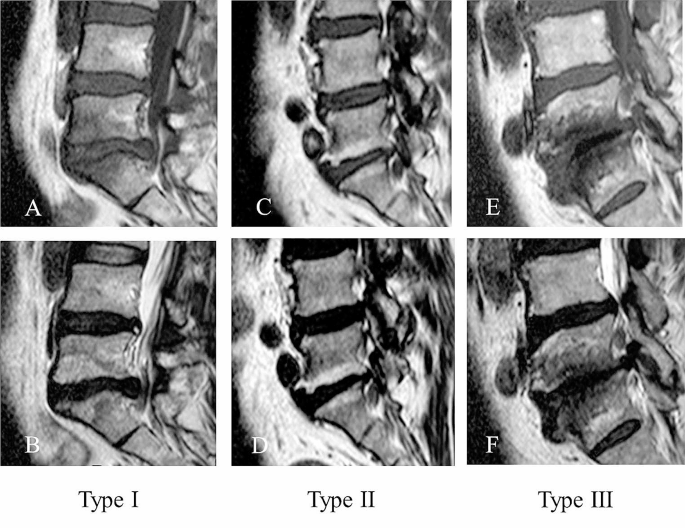Common Conditions
Modic Changes
Modic changes are specific changes in the vertebral bony endplates and adjacent bone marrow that can only be seen on MRI scans. These changes occur in response to degeneration or injury in the intervertebral discs and are commonly associated with chronic lower back pain. Modic changes are classified into three types, each representing a different stage of spinal degeneration and inflammation.

What causes Modic changes?
Modic changes typically develop due to degenerate disc disease (sometimes minor). It is unknown why some people develop Modic changes and others do not. Several theories have been suggested but none have been proven.
Types of Modic changes
Modic changes are classified into three main types, based on MRI findings:
- Modic Type 1:
— Represents active inflammation.
— The vertebral endplates appear swollen, with increased fluid in the bone marrow.
— Often associated with chronic spine pain including night pain. Some studies have shown that 80%+ of patients with Modic type 1 changes have associated pain. - Modic Type 2:
— Represents fatty degeneration of the bone marrow.
— The bone marrow converts to fatty tissue, indicating a more chronic phase of degeneration.
— Sometimes associated with spine pain (40% of cases). Some studies have suggested that over years, Modic 1 becomes Modic 2 change, and some patients have mixed Modic 1 and 2 in the same vertebra. - Modic Type 3:
— Represents advanced degeneration, with bone sclerosis (thickening).
— The vertebral endplates appear thickened and more rigid.
— Typically associated with long-term spinal wear and tear and is usually thought to not be painful, but pain arises from the underlying disc degeneration.
Common symptoms of Modic changes
The symptoms of Modic changes can vary, but may include:
- Chronic back pain: Often persistent and worse with movement or prolonged sitting.
- Stiffness: Reduced spinal flexibility, particularly in the morning or after periods of inactivity.
- Increased pain with activity: Pain may be aggravated by bending, lifting, or standing for long periods.
- Localized tenderness: The affected area of the spine may feel sore when pressed.
- Night pain: Especially due to Modic 1 changes.
Diagnosis of Modic changes
Modic changes are diagnosed using a combination of clinical evaluation and imaging studies. A doctor will begin by reviewing your symptoms – typically chronic lower back pain – and conducting a physical examination to assess spinal mobility, tenderness, and any signs of nerve involvement.
MRI scanning is the primary tool used to identify Modic changes. These appear as distinct changes in the bone marrow of the vertebrae next to a degenerated disc.
While Modic changes can be associated with pain, they may also be found in people without symptoms. Therefore, diagnosis also depends on how well imaging findings align with clinical presentation.
Management of Modic changes
Treatment for Modic changes focuses on pain relief and improving spinal health. Options include:
- Conservative management:
— Activity modification to reduce stress on the spine. - Medications:
— Nonsteroidal anti-inflammatory drugs (NSAIDs) for pain and inflammation – especially the night pain of Modic 1.
— Muscle relaxants or nerve pain medications if needed. - Physical therapy:
— Strengthening exercises to support the spine and improve posture.
— Stretching routines to enhance flexibility and reduce stiffness. - Injections:
— Corticosteroid injections may help reduce inflammation in painful cases. - Lifestyle modifications:
— Weight management to reduce strain on the spine.
— Ergonomic adjustments to improve posture and reduce pressure on the affected area. - Surgical options:
— Surgery is sometimes needed if symptoms are severe and non-responsive to other treatments. Options may include spinal fusion or disc replacement.
— Basivertebral nerve ablation: This is a new technique being increasingly undertaken by some specialists. It may produce pain relief for Modic 1 changes for up to 12 months.

